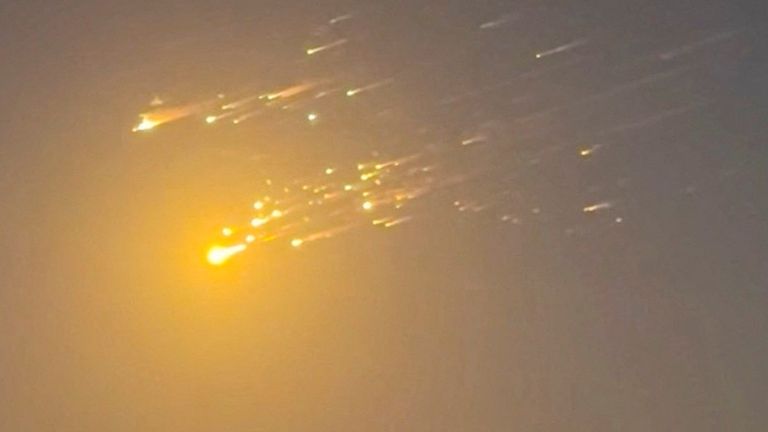A SpaceX rocket experienced an explosion seconds after its launch from Texas, which forced aircraft delays while emergency crews warned about space debris falling to the ground. During its space ascent, the SpaceX unoccupied vehicle “experienced a rapid, unscheduled disassembly,” which prompted it to lose ground station communication.
The SpaceX Starship spacecraft became uncontrolled after engaging its booster rockets in the largest rocket flight attempt in history. The spacefaring debris coming down from the sky caused no injuries and left no damage behind, but eyewitnesses in Caribbean Sea island nations captured images of the fiery contents. The rocket underwent its eighth test mission, which turned out to be its second unsuccessful attempt.
During its intended one-hour flight, the spaceship aimed to fly over the Indian Ocean before heading into Earth orbit at its initial takeoff length, which reached 123 m (403 ft). The Super Heavy booster responsible for initiating launch operated properly by returning safely to its launchpad. Within minutes, SpaceX staff began interacting with safety authorities to launch their prearranged emergency protocols.
SpaceX declared that it would analyze the recorded data to determine the main contributing factor to the engine failure and specified that several engines stopped working before the explosion happened. Today’s Starship mission will provide additional knowledge that will strengthen the craft’s reliability according to the traditional definition of success derived from acquired learning. According to this statement, all falling debris needed to stay within specific, predetermined boundaries, and the rocket included no toxic substance. Any person who discovers craft wreckage can contact the company via phone or email.
No official statement came from Musk regarding the explosion that occurred on Thursday.
A Reuters news video shows sky-falling debris in The Bahamas.
Particular debris materials descended from the Bahamas sky. The incident prompted temporary flight suspensions at Florida airports, particularly in Miami and Orlando, because pilots feared falling, burning objects. According to the Federal Aviation Administration, a “space launch incident” delayed all flights entering and leaving airports.
SpaceX conducted a successful test launch of the Starship rocket from Texas in January before the subsequent unsuccessful rocket test incident. A short airport closure occurred two months earlier when the FAA took similar precautions about descending debris. The FAA ordered a suspension of ship launches following the January incident, which produced damages to properties throughout the Caribbean Islands of the Turks and Caicos.
SpaceX flight commentator Dan Huot informed reporters at the launch site that the situation repeated from the previous test run because the company had gained experience through practice. US media has revealed that SpaceX performed this new Starship launch before FAA completed its review of the January transformer event. An official government statement from the Turks and Caicos government declared their continuous communication with US authorities and SpaceX regarding safety measures to protect islands in the Caribbean.
Media content available on X presented evidence of rockets burning while descending over the Caribbean Sea. The Bahamian population found safer ground to shield themselves from the approaching flying rubble.
Starship represents the largest and most powerful rocket launch system ever constructed as Musk advances his plans to establish Martian settlements. SpaceX has designed its Starship spacecraft combined with a Super Heavy rocket as a Starship to achieve full reusability, according to company statements.







